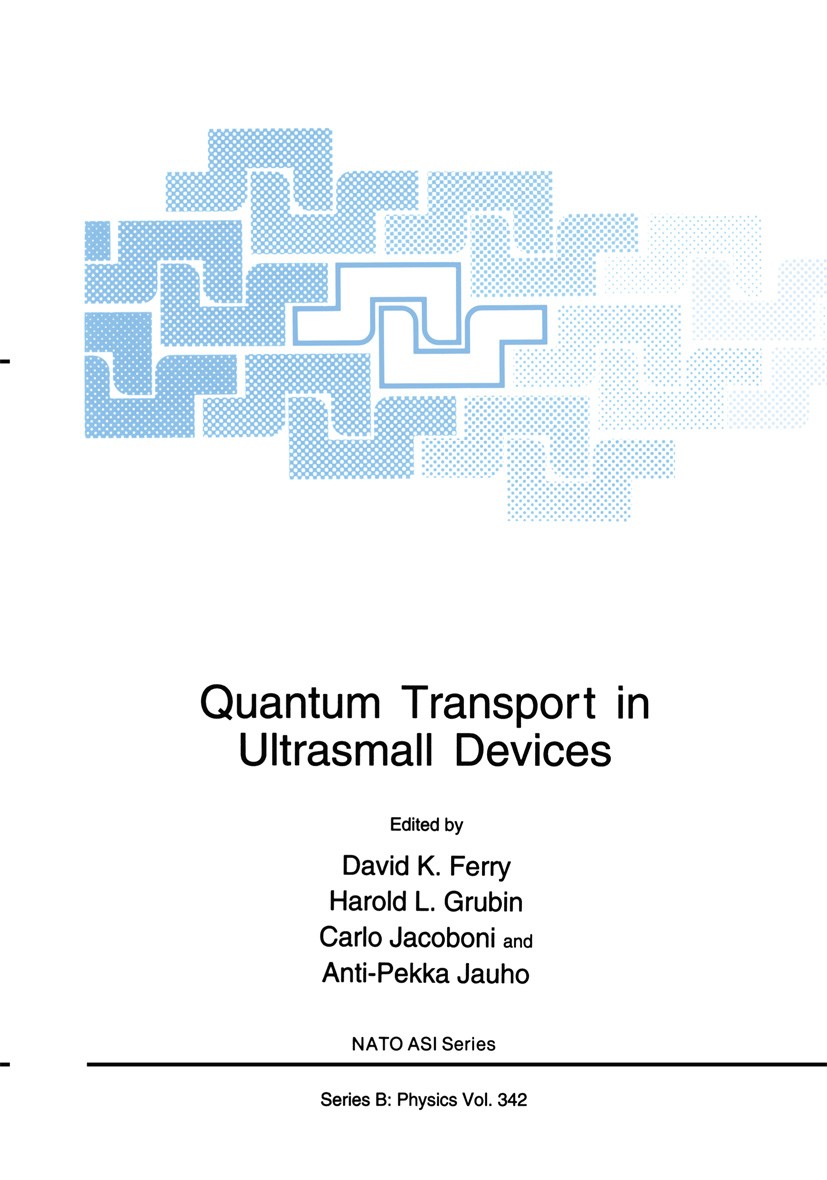| 书目名称 | Quantum Transport in Ultrasmall Devices | | 副标题 | Proceedings of a NAT | | 编辑 | David K. Ferry,Harold L. Grubin,Anti-Pekka Jauho | | 视频video | http://file.papertrans.cn/782/781533/781533.mp4 | | 丛书名称 | NATO Science Series B: | | 图书封面 |  | | 描述 | The operation of semiconductor devices depends upon the use of electrical potential barriers (such as gate depletion) in controlling the carrier densities (electrons and holes) and their transport. Although a successful device design is quite complicated and involves many aspects, the device engineering is mostly to devise a "best" device design by defIning optimal device structures and manipulating impurity profIles to obtain optimal control of the carrier flow through the device. This becomes increasingly diffIcult as the device scale becomes smaller and smaller. Since the introduction of integrated circuits, the number of individual transistors on a single chip has doubled approximately every three years. As the number of devices has grown, the critical dimension of the smallest feature, such as a gate length (which is related to the transport length defIning the channel), has consequently declined. The reduction of this design rule proceeds approximately by a factor of 1. 4 each generation, which means we will be using 0. 1-0. 15 ). lm rules for the 4 Gb chips a decade from now. If we continue this extrapolation, current technology will require 30 nm design rules, and a cell 3 | | 出版日期 | Conference proceedings 1995 | | 关键词 | Coulomb; electrons; modeling; quantum dot; simulation; spectroscopy; transmission | | 版次 | 1 | | doi | https://doi.org/10.1007/978-1-4615-1967-6 | | isbn_softcover | 978-1-4613-5809-1 | | isbn_ebook | 978-1-4615-1967-6Series ISSN 0258-1221 | | issn_series | 0258-1221 | | copyright | Springer Science+Business Media New York 1995 |
The information of publication is updating

|
|
 |Archiver|手机版|小黑屋|
派博传思国际
( 京公网安备110108008328)
GMT+8, 2025-12-28 02:14
|Archiver|手机版|小黑屋|
派博传思国际
( 京公网安备110108008328)
GMT+8, 2025-12-28 02:14


